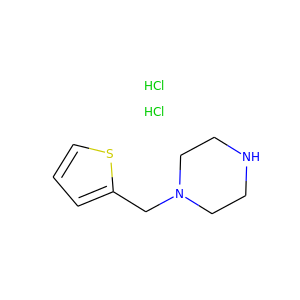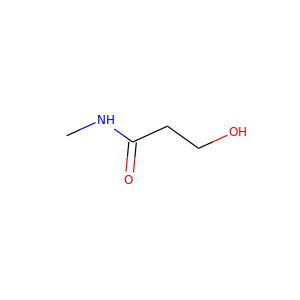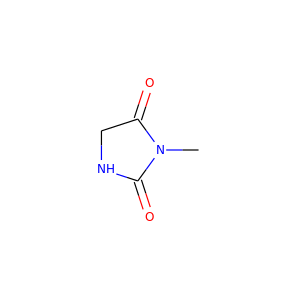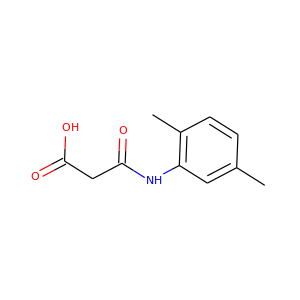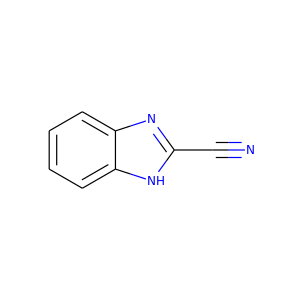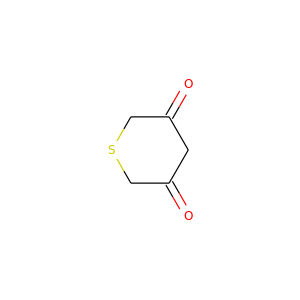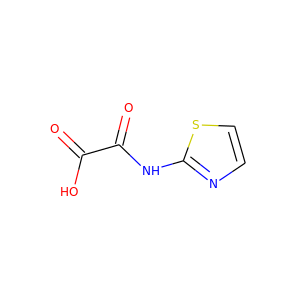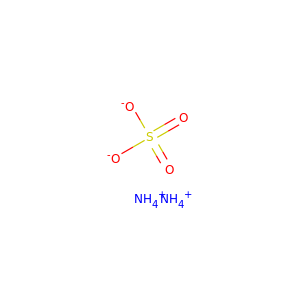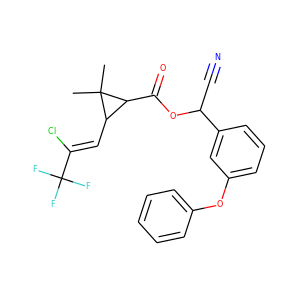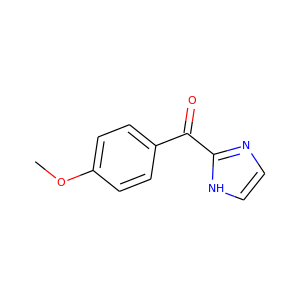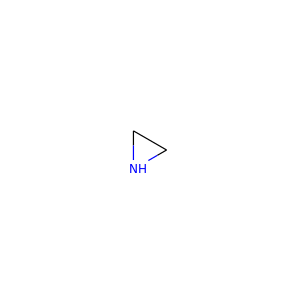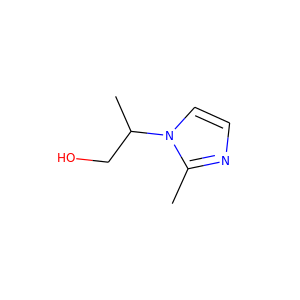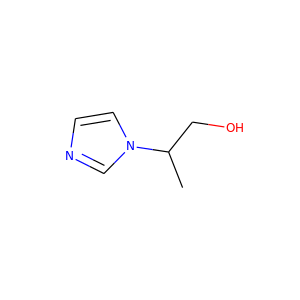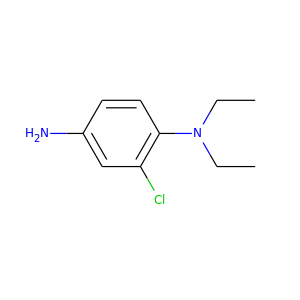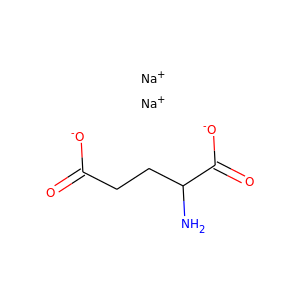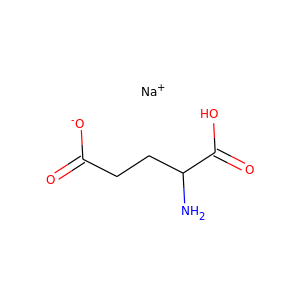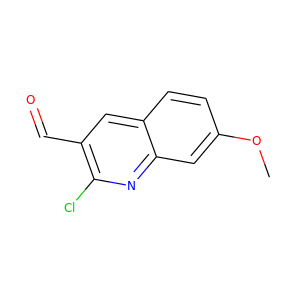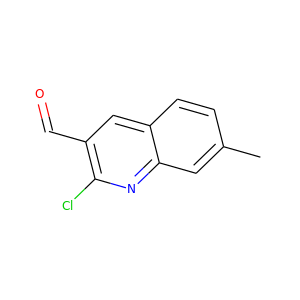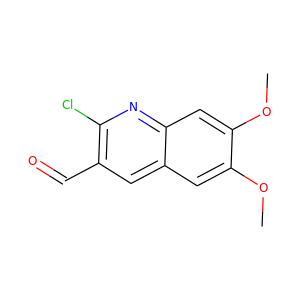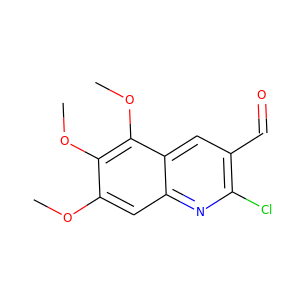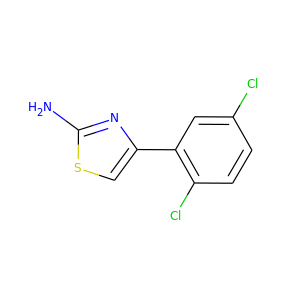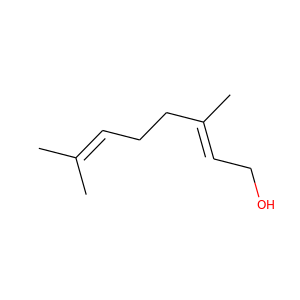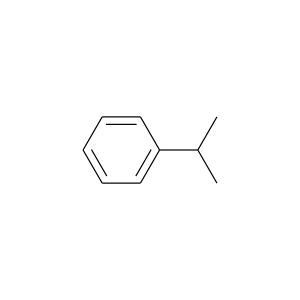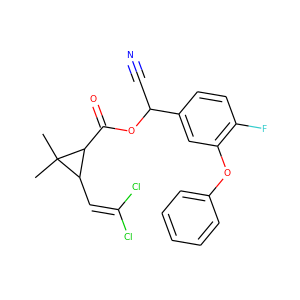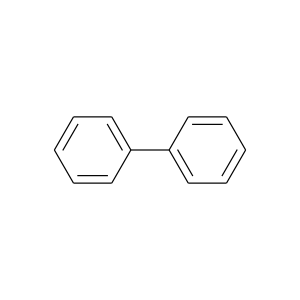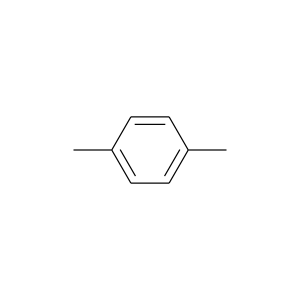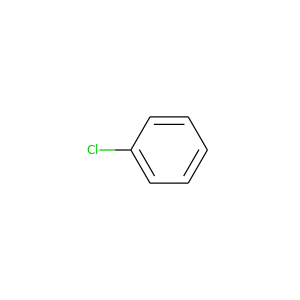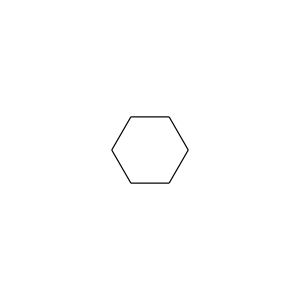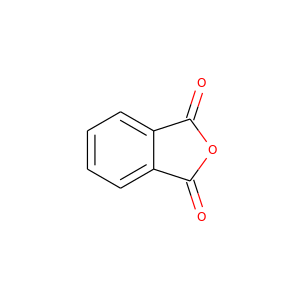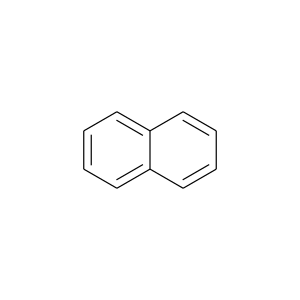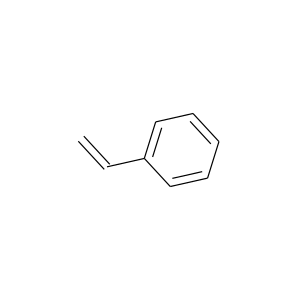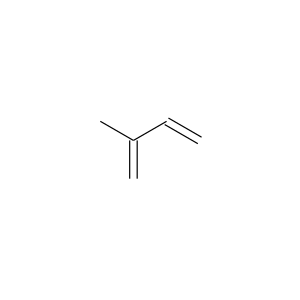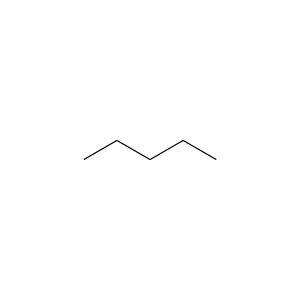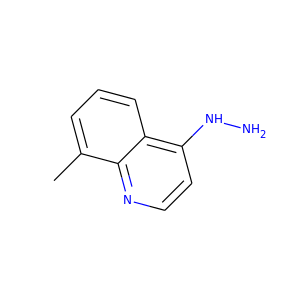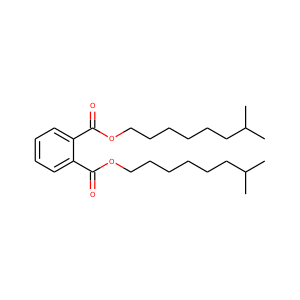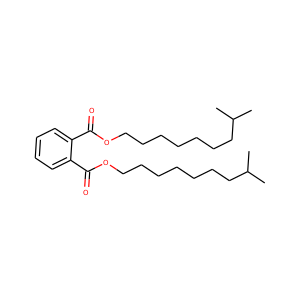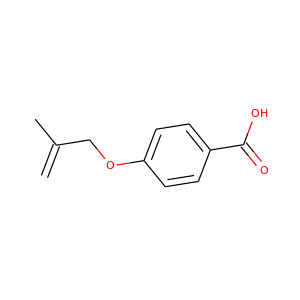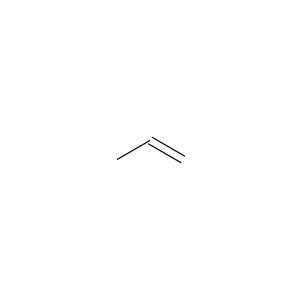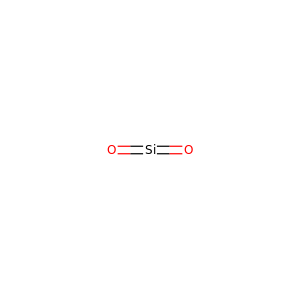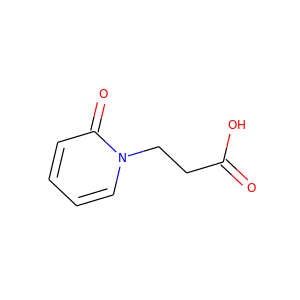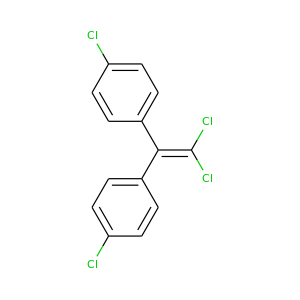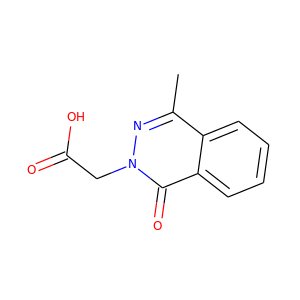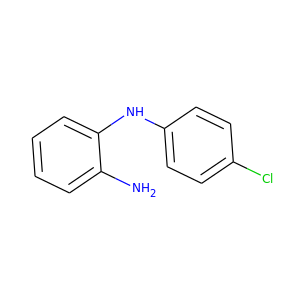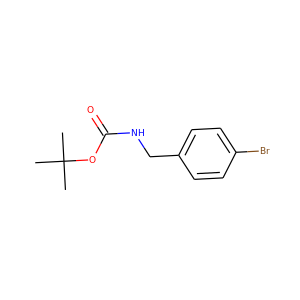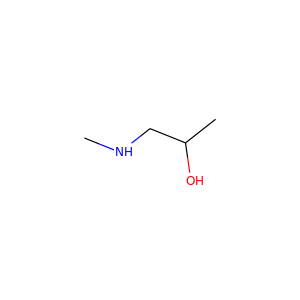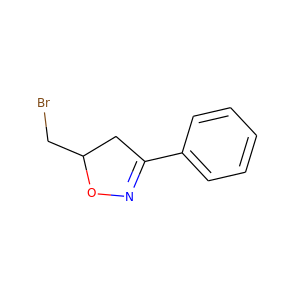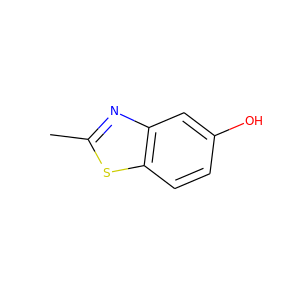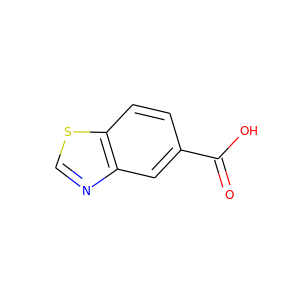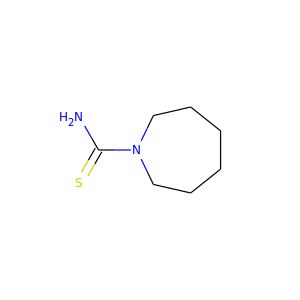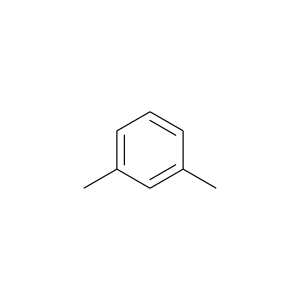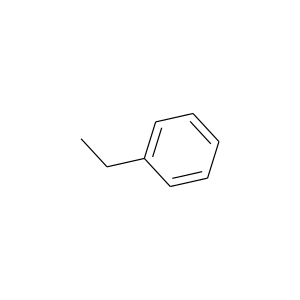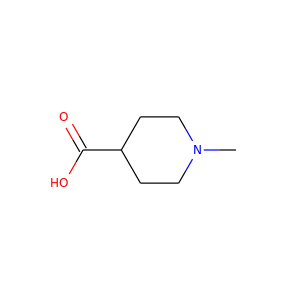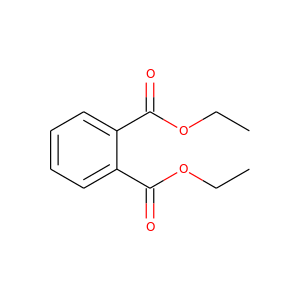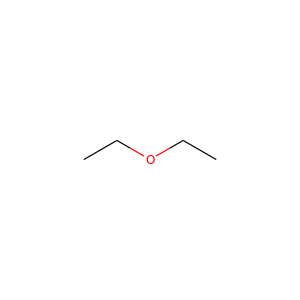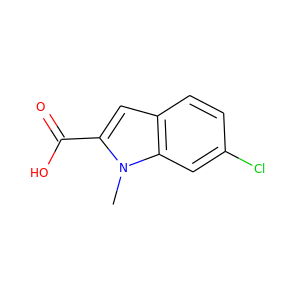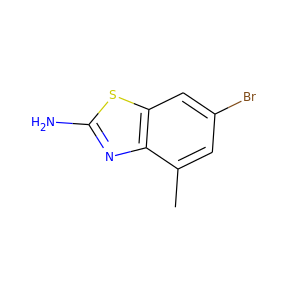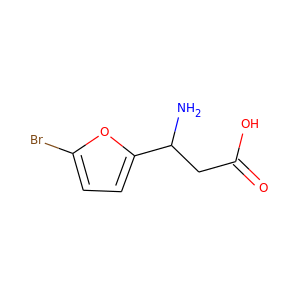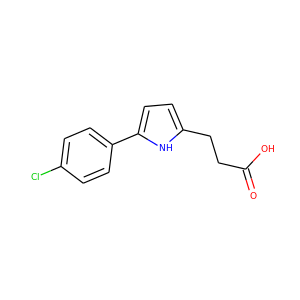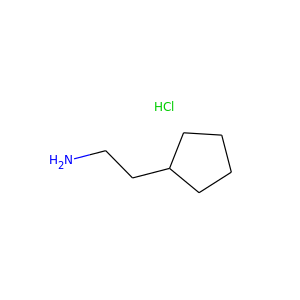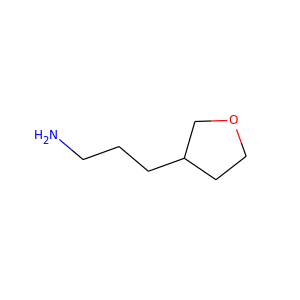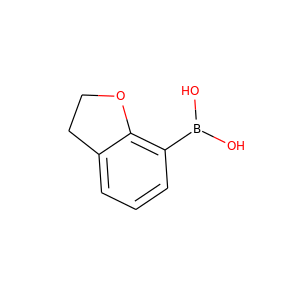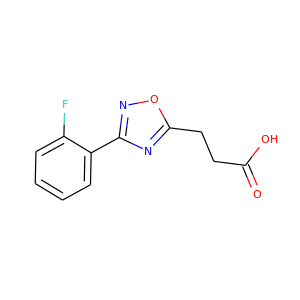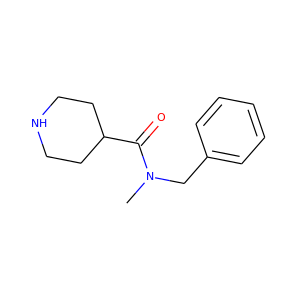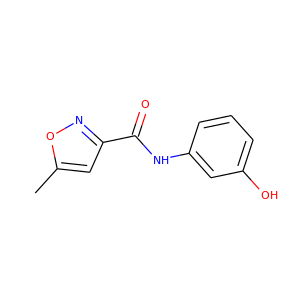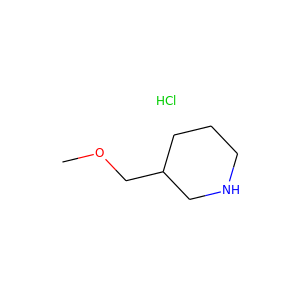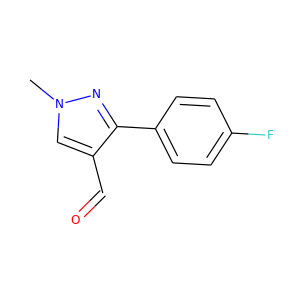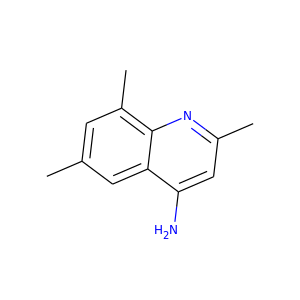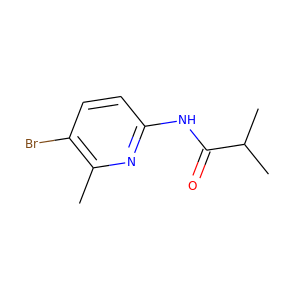6803-90-3
(6803-90-3)
1-(2-thienylmethyl)piperazine dihydrochloride
3-methylimidazolidine-2,4-dione
(6843-45-4)
3-methyl-2,4-imidazolidinedione · 6843-45-4
6850-98-2
(6850-98-2)
3-[(2,5-dimethylphenyl)amino]-3-oxopropanoic acid
ETHYLENE
(9002-88-4, 68037-39-8, 74-85-1, 56453-76-0)
ethene
Ethylene (IUPAC name: ethene) is a hydrocarbon which has the formula C
2H
4 or H2C=CH2. It is a colorless flammable gas with a faint "sweet and musky" odour when pure. It is the simplest alkene (a hydrocarbon with carbon-carbon double bonds).
Ethylene is widely used in the chemical industry, and its worldwide productio...
AMMONIUM SULFATE
(7704-34-9, 7783-20-2, 68187-17-7, 7783-20-2, 68081-96-9)
Sulfate, Ammonium
Ammonium sulfate (American English; ammonium sulphate in British English); (NH4)2SO4, is an inorganic salt with a number of commercial uses. The most common use is as a soil fertilizer. It contains 21% nitrogen and 24% sulfur.
...
CYHALOTHRIN
(68085-85-8, 91465-08-6)
Icon · Commodore · Sentinel
Cyhalothrin is an organic compound that is used as a pesticide. It is a pyrethroid, a class of man-made insecticides that mimic the structure and insecticidal properties of the naturally occurring insecticide pyrethrum which comes from the flowers of chrysanthemums. Synthetic pyrethroids, like lambda-cyhalothrin, are o...
68090-12-0
(68090-12-0)
1H-imidazol-2-yl(4-methoxyphenyl)methanone
Aziridine
(9077-52-5, 151-56-4, 68130-99-4, 9002-98-6, 68130-98-3)
ethyleneimine · ethylenimine · aziridine, conjugate acid
Aziridines are organic compounds containing the aziridine functional group, a three-membered heterocycle with one amine group (-NH-) and two methylene bridges (-CH
2-). The parent compound is aziridine (or ethylene imine), with molecular formula C
2H
5N....
Aziridine
(9077-52-5, 151-56-4, 68130-99-4, 9002-98-6, 68130-98-3)
ethyleneimine · ethylenimine · aziridine, conjugate acid
Aziridines are organic compounds containing the aziridine functional group, a three-membered heterocycle with one amine group (-NH-) and two methylene bridges (-CH
2-). The parent compound is aziridine (or ethylene imine), with molecular formula C
2H
5N....
97801-05-3
(68132-82-1)
2-(2-methyl-1H-imidazol-1-yl)-1-propanol
2-(1h-imidazol-1-yl)propan-1-ol
(191725-72-1, 68132-83-2)
2-(1H-imidazol-1-yl)-1-propanol · 191725-72-1
68155-76-0
(68155-76-0)
(4-amino-2-chlorophenyl)diethylamine
AMMONIUM SULFATE
(7704-34-9, 7783-20-2, 68187-17-7, 7783-20-2, 68081-96-9)
Sulfate, Ammonium
Ammonium sulfate (American English; ammonium sulphate in British English); (NH4)2SO4, is an inorganic salt with a number of commercial uses. The most common use is as a soil fertilizer. It contains 21% nitrogen and 24% sulfur.
...
Disodium L-glutamate
(16690-92-9, 32221-81-1, 68187-30-4, 142-47-2, 16177-21-2)
Accent · MSG · Monosodium Glutamate
Monosodium glutamate (MSG, also known as sodium glutamate) is the sodium salt of glutamic acid, one of the most abundant naturally occurring non-essential amino acids. Monosodium glutamate is found naturally in tomatoes, cheese and other foods.
MSG is used in the food industry as a flavor enhancer with an umami taste t...
Sodium glutamate
(68187-32-6, 68187-34-8, 142-47-2, 68187-33-7)
Accent · MSG · Monosodium Glutamate
Sodium glutamate
(68187-32-6, 68187-34-8, 142-47-2, 68187-33-7)
Accent · MSG · Monosodium Glutamate
Sodium glutamate
(68187-32-6, 68187-34-8, 142-47-2, 68187-33-7)
Accent · MSG · Monosodium Glutamate
2-chloro-7-methoxyquinoline-3-carbaldehyde
(68236-20-4)
2-chloro-7-methoxy-3-quinolinecarbaldehyde · 68236-20-4
68236-21-5
(68236-21-5)
2-chloro-7-methyl-3-quinolinecarbaldehyde
2-chloro-6,7-dimethoxyquinoline-3-carbaldehyde
(68236-23-7)
2-chloro-6,7-dimethoxy-3-quinolinecarbaldehyde · 68236-23-7
2-chloro-5,6,7-trimethoxyquinoline-3-carbaldehyde
(68236-25-9)
68236-25-9 · 2-chloro-5,6,7-trimethoxy-3-quinolinecarbaldehyde
68301-45-1
(68301-45-1)
4-(2,5-dichlorophenyl)-1,3-thiazol-2-amine
GERANIOL
(106-24-1, 624-15-7, 68311-14-8)
nerol · geraniol, (E)-isomer · geraniol, titanium (4+) salt
Geraniol is a monoterpenoid and an alcohol. It is the primary part of rose oil, palmarosa oil, and citronella oil (Java type). It also occurs in small quantities in geranium, lemon, and many other essential oils. It appears as a clear to pale-yellow oil that is insoluble in water, but soluble in most common organic sol...
4-aminoquinoline-3-carboxylic Acid
(68313-46-2)
68313-46-2 · 4-amino-3-quinolinecarboxylic acid
CUMENE
(68333-89-1, 98-82-8, 68411-37-0, 101316-43-2)
isopropylbenzene · cumol · 2-phenylpropane
Cumene is the common name for isopropylbenzene, an organic compound that is based on an aromatic hydrocarbon with an aliphatic substitution. It is a constituent of crude oil and refined fuels. It is a flammable colorless liquid that has a boiling point of 152 C. Nearly all the cumene that is produced as a pure compoun...
CYFLUTHRIN
(68359-37-5)
cyano(4-fluoro-3-phenoxyphenyl)methyl 3-(2,2-dichloroethenyl)-2,2-dimethylcyclopropane carboxylate · OMS 2012 · beta-cyfluthrin
Biphenyl
(92-52-4, 68409-73-4)
diphenyl · diphenyl, 14C-labeled
Biphenyl (or diphenyl or phenylbenzene or 1,1-biphenyl or lemonene) is an organic compound that forms colorless crystals. Particularly in older literature, compounds containing the functional group consisting of biphenyl less one hydrogen (the site at which it is attached) may use the prefixes xenyl or diphenylyl.
It ...
CUMENE
(68333-89-1, 98-82-8, 68411-37-0, 101316-43-2)
isopropylbenzene · cumol · 2-phenylpropane
Cumene is the common name for isopropylbenzene, an organic compound that is based on an aromatic hydrocarbon with an aliphatic substitution. It is a constituent of crude oil and refined fuels. It is a flammable colorless liquid that has a boiling point of 152 C. Nearly all the cumene that is produced as a pure compoun...
P-XYLENE
(68650-36-2, 68411-39-2, 106-42-3)
paraxylene · 4-xylene · para-xylene
p-Xylene (para-xylene) is an aromatic hydrocarbon. It is one of the three isomers of dimethylbenzene known collectively as xylenes. The p- stands for para-, indicating that the two methyl groups in p-xylene occupy the diametrically opposite substituent positions 1 and 4. It is in the positions of the two methyl groups,...
CHLOROBENZENE
(50717-45-8, 108-90-7, 68411-45-0)
monochlorobenzene
Chlorobenzene is an aromatic organic compound with the chemical formula C6H5Cl. This colorless, flammable liquid is a common solvent and a widely used intermediate in the manufacture of other chemicals.
...
CYCLOHEXANE
(25012-93-5, 110-82-7, 68411-76-7, 68512-15-2, 68609-05-2)
Cyclohexane is a cycloalkane with the molecular formula C6H12 (the alkyl is abbreviated Cy). Cyclohexane is mainly used for the industrial production of adipic acid and caprolactam, which are precursors to nylon. Cyclohexane is a colourless, flammable liquid with a distinctive detergent-like odor, reminiscent of cleani...
PHTHALIC ANHYDRIDE
(68411-80-3, 85-44-9)
phthalic acid anhydride · 1,3-isobenzofurandione · 1,2-benzenedicarboxylic anhydride
Phthalic anhydride is the organic compound with the formula C6H4(CO)2O. It is the anhydride of phthalic acid. Phthalic anhydride is a principal commercial form of phthalic acid. It was the first anhydride of a dicarboxylic acid to be used commercially. This colourless solid is an important industrial chemical, especial...
O-XYLENE
(95-47-6, 68411-84-7)
2-xylene · o-xylol · ortho-xylene
o-Xylene (ortho-xylene) is an aromatic hydrocarbon with the formula C6H4(CH3)2. with two methyl substituents bonded to adjacent carbon atoms of a benzene ring (the ortho configuration). It is a constitutional isomer of m-xylene and p-xylene, the mixture being called xylene or xylenes. o-Xylene is a colorless slightly o...
NITRIC ACID
(68412-17-9, 7697-37-2, 7697-37-3, 12507-77-6, 7697-37-2)
Acid, Nitric
Nitric acid (HNO3), also known as aqua fortis and spirit of niter, is a highly corrosive mineral acid.
The pure compound is colorless, but older samples tend to acquire a yellow cast due to decomposition into oxides of nitrogen and water. Most commercially available nitric acid has a concentration of 68% in water. When...
naphthalene
(91-20-3, 68412-25-9)
Naphthalene is an organic compound with formula C
10H
8. It is the simplest polycyclic aromatic hydrocarbon, and is a white crystalline solid with a characteristic odor that is detectable at concentrations as low as 0.08ppm by mass. As an aromatic hydrocarbon, naphthalene's structure consists of a fused pair of benzen...
STYRENE
(9003-53-6, 100-42-5, 98444-30-5, 12770-88-6, 68441-35-0)
Styrene Monomer · Styrol · Vinylbenzene
Styrene, also known as ethenylbenzene, vinylbenzene, and phenylethene, is an organic compound with the chemical formula C6H5CH=CH2. This derivative of benzene is a colorless oily liquid that evaporates easily and has a sweet smell, although high concentrations have a less pleasant odor. Styrene is the precursor to poly...
ISOPRENE
(78-79-5, 68441-58-7)
Isoprene, or 2-methyl-1,3-butadiene, is a common organic compound with the formula CH2=C(CH3)CH=CH2. In its pure form it is a colorless volatile liquid. Isoprene is produced by many plants, and its polymers are the main component of natural rubber. C. G. Williams named the compound in 1860 after obtaining it from ther...
BUTANE
(68514-31-8, 106-97-8, 68476-42-6)
n-butane
Butane () is an organic compound with the formula C4H10 that is an alkane with four carbon atoms. Butane is a gas at room temperature and atmospheric pressure. The term may refer to either of two structural isomers, n-butane or isobutane (also called "methylpropane"), or to a mixture of these isomers. In the IUPAC nome...
PENTANE
(87741-01-3, 102056-77-9, 109-66-0, 68476-43-7, 68647-60-9, 68476-55-1)
n-pentane
Pentane is an organic compound with the formula C5H12that is, an alkane with five carbon atoms. The term may refer to any of three structural isomers, or to a mixture of them: in the IUPAC nomenclature, however, pentane means exclusively the n-pentane isomer; the other two are called isopentane (methylbutane) and neop...
HEXANE
(110-54-3, 68476-44-8, 92112-69-1)
n-hexane · n-hexane, 3-(13)C-labeled cpd · n-hexane, 2-(13)C-labeled cpd
Hexane is an alkane of six carbon atoms, with the chemical formula C6H14.
The term may refer to any of the five structural isomers with that formula, or to a mixture of them. In IUPAC nomenclature, however, hexane is the unbranched isomer (n-hexane); the other four isomers are named as methylated derivatives of pentan...
PROPANE
(68476-49-3, 74-98-6, 68920-07-0, 70913-86-9, 69430-33-7)
Propane () is a three-carbon alkane with the molecular formula C3H8. It is a gas at standard temperature and pressure, but compressible to a transportable liquid. A by-product of natural gas processing and petroleum refining, it is commonly used as a fuel for barbecue grills. Propane is one of a group of liquefied petr...
PENTANE
(87741-01-3, 102056-77-9, 109-66-0, 68476-43-7, 68647-60-9, 68476-55-1)
n-pentane
Pentane is an organic compound with the formula C5H12that is, an alkane with five carbon atoms. The term may refer to any of three structural isomers, or to a mixture of them: in the IUPAC nomenclature, however, pentane means exclusively the n-pentane isomer; the other two are called isopentane (methylbutane) and neop...
4-Hydrazino-8-methylquinoline
(68500-35-6)
68500-35-6
CYCLOHEXANE
(25012-93-5, 110-82-7, 68411-76-7, 68512-15-2, 68609-05-2)
Cyclohexane is a cycloalkane with the molecular formula C6H12 (the alkyl is abbreviated Cy). Cyclohexane is mainly used for the industrial production of adipic acid and caprolactam, which are precursors to nylon. Cyclohexane is a colourless, flammable liquid with a distinctive detergent-like odor, reminiscent of cleani...
BUTANE
(68514-31-8, 106-97-8, 68476-42-6)
n-butane
Butane () is an organic compound with the formula C4H10 that is an alkane with four carbon atoms. Butane is a gas at room temperature and atmospheric pressure. The term may refer to either of two structural isomers, n-butane or isobutane (also called "methylpropane"), or to a mixture of these isomers. In the IUPAC nome...
DIISONONYL PHTHALATE
(28553-12-0, 68515-48-0)
ENJ 2065 · di-isononylphthalate · ENJ-2065
Diisononyl phthalate (DINP) is a phthalate used as a plasticizer. DINP is typically a mixture of chemical compounds consisting of various isononyl esters of phthalic acid.
The European Union has set a maximum specific migration limit from food contact materials of 9mg/kg food for the sum of diisononyl phthalates and d...
DIISODECYL PHTHALATE
(26761-40-0, 89-16-7, 68515-49-1)
di-isodecyl phthalate
Diisodecyl phthalate (DIDP) is a commonly used plasticizer used in the production of plastic and plastic coating to increase flexibility. It is a mixture of compounds derived from the esterification of phthalic acid and isomeric decyl alcohols.
The coating on furnishings, cookware, pharmaceutical pills, food wrappers a...
68564-43-2
(68564-43-2)
4-[(2-methylprop-2-en-1-yl)oxy]benzoic acid
PROPYLENE
(115-07-1, 95751-29-4, 25085-53-4, 90530-12-4, 97102-85-7, 68606-26-8)
propene · isopropylidene
Propene, also known as propylene or methyl ethylene, is an unsaturated organic compound having the chemical formula C3H6. It has one double bond, and is the second simplest member of the alkene class of hydrocarbons.
...
CYCLOHEXANE
(25012-93-5, 110-82-7, 68411-76-7, 68512-15-2, 68609-05-2)
Cyclohexane is a cycloalkane with the molecular formula C6H12 (the alkyl is abbreviated Cy). Cyclohexane is mainly used for the industrial production of adipic acid and caprolactam, which are precursors to nylon. Cyclohexane is a colourless, flammable liquid with a distinctive detergent-like odor, reminiscent of cleani...
Silica
(13778-38-6, 112945-52-5, 14639-89-5, 10279-57-9, 61790-53-2, 91053-39-3, 92283-58-4, 13778-37-5, 67256-35-3, 308066-74-2, 7631-86-9, 112926-00-8, 15468-32-3, 14808-60-7, 11126-22-0, 112926-00-8, 68611-44-9, 99439-28-8, 14464-46-1, 15723-40-7, 68909-20-6, 17679-64-0, 60676-86-0, 7631-86-9, 14808-60-7; 1317-79-9)
Silicon Dioxide · Cristobalite · Tridymite
Silicon dioxide, also known as silica (from the Latin silex), is an oxide of silicon with the chemical formula SiO2, most commonly found in nature as quartz and in various living organisms. In many parts of the world, silica is the major constituent of sand. Silica is one of the most complex and most abundant families ...
3-(2-oxopyridin-1(2H)-yl)propanoic acid
(68634-48-0)
3-(2-oxo-1(2H)-pyridinyl)propanoic acid · 68634-48-0
PENTANE
(87741-01-3, 102056-77-9, 109-66-0, 68476-43-7, 68647-60-9, 68476-55-1)
n-pentane
Pentane is an organic compound with the formula C5H12that is, an alkane with five carbon atoms. The term may refer to any of three structural isomers, or to a mixture of them: in the IUPAC nomenclature, however, pentane means exclusively the n-pentane isomer; the other two are called isopentane (methylbutane) and neop...
P-XYLENE
(68650-36-2, 68411-39-2, 106-42-3)
paraxylene · 4-xylene · para-xylene
p-Xylene (para-xylene) is an aromatic hydrocarbon. It is one of the three isomers of dimethylbenzene known collectively as xylenes. The p- stands for para-, indicating that the two methyl groups in p-xylene occupy the diametrically opposite substituent positions 1 and 4. It is in the positions of the two methyl groups,...
p,p'-DDE
(68679-99-2, 72-55-9)
DDE · DDX · DDMU
Dichlorodiphenyldichloroethylene (DDE) is a chemical compound formed by the loss of hydrogen chloride (dehydrohalogenation) from DDT, of which it is one of the more common breakdown products. Due to DDTs massive prevalence in society and agriculture during the mid 20th century, DDT and DDE are still widely seen in ani...
68775-82-6
(68775-82-6)
(4-methyl-1-oxophthalazin-2(1H)-yl)acetic acid
68817-71-0
(68817-71-0)
(2-aminophenyl)(4-chlorophenyl)amine
68819-84-1
(68819-84-1)
tert-butyl (4-bromobenzyl)carbamate
1-(Methylamino)propan-2-ol
(16667-45-1, 68832-44-0)
16667-45-1 · 5 beta-cholestane-3 alpha, 7 alpha, 12 alpha, 23-tetrol · 5 beta-cholestane-3,7,12,23-tetrol
2-methyl-1,3-benzothiazol-5-ol
(68867-14-1)
68867-14-1
Benzothiazole-5-carboxylic acid
(68867-17-4)
68867-17-4 · 1,3-benzothiazole-5-carboxylic acid
Azepane-1-carbothioamide
(68881-66-3)
68881-66-3
M-XYLENE
(68908-87-2, 108-38-3)
3-xylene · meta-xylene · m-xylol
m-Xylene (meta-xylene) is an aromatic hydrocarbon. It is one of the three isomers of dimethylbenzene known collectively as xylenes. The m- stands for meta-, indicating that the two methyl groups in m-xylene occupy positions 1 and 3 on a benzene ring. It is in the positions of the two methyl groups, their arene substitu...
ETHYLBENZENE
(100-41-4, 27536-89-6, 70955-17-8, 68908-88-3, 111-76-2)
Ethylbenzene is an organic compound with the formula C6H5CH2CH3. It is a highly flammable, colorless liquid with an odor similar to that of gasoline. This monocyclic aromatic hydrocarbon is important in the petrochemical industry as an intermediate in the production of styrene, the precursor to polystyrene, a common pl...
Silica
(13778-38-6, 112945-52-5, 14639-89-5, 10279-57-9, 61790-53-2, 91053-39-3, 92283-58-4, 13778-37-5, 67256-35-3, 308066-74-2, 7631-86-9, 112926-00-8, 15468-32-3, 14808-60-7, 11126-22-0, 112926-00-8, 68611-44-9, 99439-28-8, 14464-46-1, 15723-40-7, 68909-20-6, 17679-64-0, 60676-86-0, 7631-86-9, 14808-60-7; 1317-79-9)
Silicon Dioxide · Cristobalite · Tridymite
Silicon dioxide, also known as silica (from the Latin silex), is an oxide of silicon with the chemical formula SiO2, most commonly found in nature as quartz and in various living organisms. In many parts of the world, silica is the major constituent of sand. Silica is one of the most complex and most abundant families ...
PROPANE
(68476-49-3, 74-98-6, 68920-07-0, 70913-86-9, 69430-33-7)
Propane () is a three-carbon alkane with the molecular formula C3H8. It is a gas at standard temperature and pressure, but compressible to a transportable liquid. A by-product of natural gas processing and petroleum refining, it is commonly used as a fuel for barbecue grills. Propane is one of a group of liquefied petr...
DIETHYL PHTHALATE
(68988-18-1, 84-66-2)
phthalic acid diethyl ester
Diethyl phthalate (DEP) is a phthalate ester, namely the diethyl ester of phthalic acid. It is a clear substance that is liquid at room temperature and is only slightly denser than liquid water. It has a faint, disagreeable odor and can be transferred from the plastics that contain it. When burned, DEP produces toxic g...
2-Methyl-1-propanol
(78-83-1, 68989-27-5)
isobutyl alcohol · isobutanol · isobutyl alcohol, aluminum salt
Isobutanol (IUPAC nomenclature: 2-methylpropan-1-ol) is an organic compound with the formula (CH3)2CHCH2OH (sometimes represented as i-BuOH). This colorless, flammable liquid with a characteristic smell is mainly used as a solvent. Its isomers, the other butanols, include n-butanol, 2-butanol, and tert-butanol, all of ...
DIETHYL ETHER
(70131-58-7, 60-29-7, 60-29-7, 100-41-4, 68991-48-0, 69013-19-0, 71011-10-4, 69227-20-9)
Ether · Ethyl Ether · Ether, Ethyl
Ethers () are a class of organic compounds that contain an ether groupan oxygen atom connected to two alkyl or aryl groups. They have the general formula ROR, where R and R represent the alkyl or aryl groups. Ethers can again be classified into two varieties: if the alkyl groups are the same on both sides of the o...
N-(Piperidin-4-yl)methanesulfonamide hydrochloride
(68996-26-9)
68996-26-9 · N-4-piperidinylmethanesulfonamide hydrochloride
680992-22-7
(680992-22-7)
2-(4-formylphenoxy)-N-(tetrahydro-2-furanylmethyl)acetamide
681126-45-4
(681126-45-4)
6-bromo-4-methyl-1,3-benzothiazol-2-amine
682803-05-0
(682803-05-0)
3-amino-3-(5-bromo-2-furyl)propanoic acid
2-cyclopentylethanamine hydrochloride
(684221-26-9)
684221-26-9 · (2-cyclopentylethyl)amine hydrochloride
3-Furanpropanamine, tetrahydro-
(684221-29-2)
3-(tetrahydrofuran-3-yl)propan-1-amine · 684221-29-2
685514-61-8
(685514-61-8)
2,3-dihydro-1-benzofuran-7-ylboronic acid
688051-07-2
(688051-07-2)
N-(3-hydroxyphenyl)-5-methyl-3-isoxazolecarboxamide
3-Methoxypiperidine hydrochloride
(688809-94-1)
688809-94-1
689250-53-1
(689250-53-1)
3-(4-fluorophenyl)-1-methyl-1H-pyrazole-4-carbaldehyde
2,6,8-trimethylquinolin-4-amine
(689277-05-2)
689277-05-2 · 2,6,8-trimethyl-4-quinolinamine
689749-45-9
(689749-45-9)
N-(5-bromo-6-methyl-2-pyridinyl)-2-methylpropanamide

